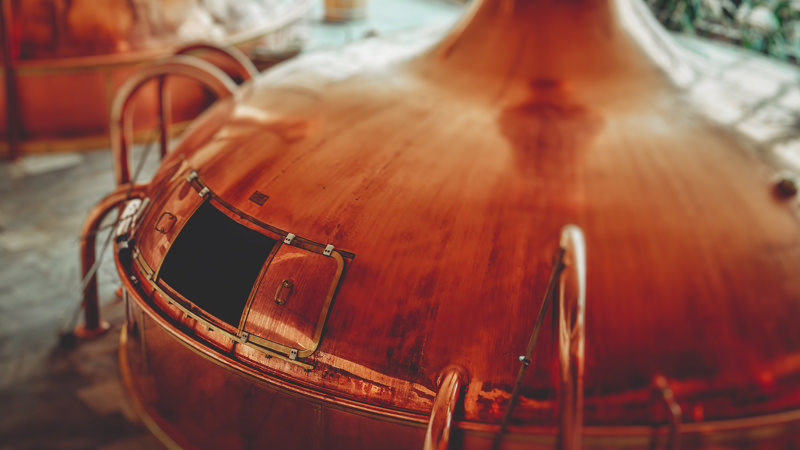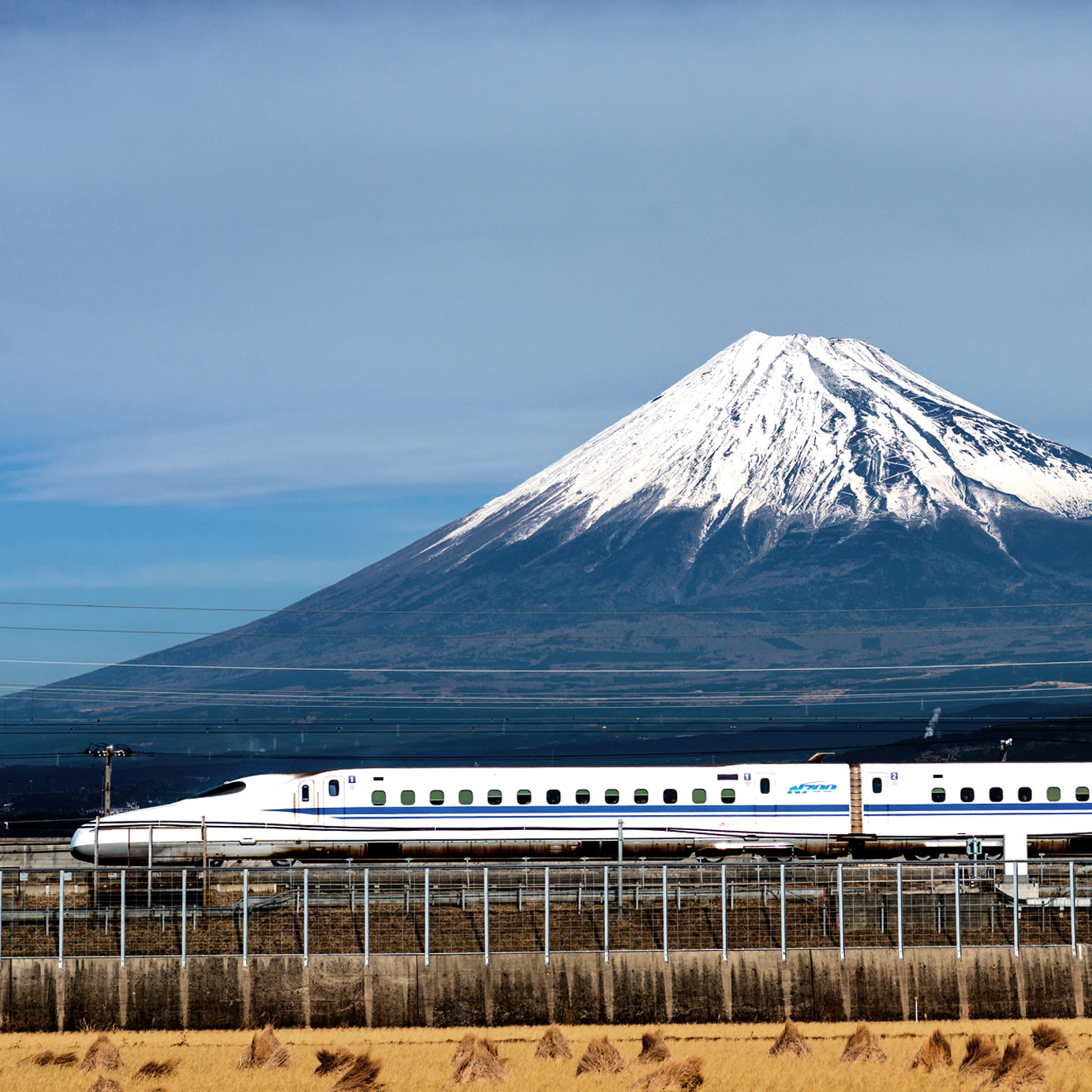In the center of a tiny town in Hokkaido, Japan’s northernmost main island, manicured grounds are dotted with what look like squat stone castles. Inside one especially imposing structure, a row of massive copper stills gleam in the sun streaming in from two-story windows.
These are not the verdant zen gardens or epic Shinto shrines of Kyoto. This is Japanese whisky country, so chosen for its purported similarities to Scottish geography. Hokkaido is home to Nikka Whisky’s Yoichi Distillery, a massively influential subsidiary of Asahi Brewing Company, and a six-still operation in a town of some 20,000 people.
In 2008, just 26 years after releasing its first single malt, a 20-year-old Yoichi was named the World’s Best Single Malt. Today, it’s not unheard of for prized Japanese whiskies to command prices of up to $70 a shot. Certain whisky aficionados speculate that Japanese producers are beginning to beat the Scots at their own game.
But how precisely did whisky — that’s whisky in the Scottish tradition, without an “e” — take hold in the Land of the Rising Sun? The answer is as complex as the spirit itself.
Missed Connections
Whisky production in Japan dates back to the 1870s on a micro scale, but things didn’t really get off the ground commercially until the early 20th century. In 1918, Masataka Taketsuru, the heir to a noted sake brewing family, traveled halfway across the world to study chemistry at the University of Glasgow and apprentice at local distilleries at the behest of the Settsu Shuzo liquor company.
By that point, Japan — for centuries an insular society closed off from the West —had opened its doors both literally and figuratively. Scotch whisky had been trickling in for more than a decade, and Settsu Shuzo reasoned it stood to make money with a homegrown version.
It wasn’t meant to be, though: According to whisky historian Mamoru Tsuchiya, the company fell on hard times, and, adding insult to injury, Taketsuru reneged on his promise to marry the daughter of Settsu Shuzo’s president. He’d fallen in love with a local Scottish girl, Rita, and married her against the wishes of both their families. Taketsuru and Settsu Shuzo parted ways, and the latter halted its plans for a Japanese whisky operation entirely.
Suntory Time
The future of Japanese whisky might have been dashed then and there had Shinjiro Torii not entered the picture. Back in 1899, Torii had founded Torii Shoten (today known as the powerful liquor conglomerate Suntory), a company then specializing in Western-style liquors in response to a wave of demand that followed Japan’s opening. Its flagship product was a port wine, but it also made an imitation whisky that, in Torii’s mind, didn’t stack up to its inspiration in the slightest. He enlisted Taketsuru to help change that.
With copious notes in hand from Taketsuru’s time in Scotland, together the pair laid the groundwork for Japan’s first real malt whisky, White Label, produced at the Yamazaki distillery on the outskirts of Kyoto and released in 1929. But product sales fell far short of expectations. Its flavor was too smoky, too different for Japanese consumers.
Torii resolved to make an expression more palatable to locals. Taketsuru disagreed, preferring to produce a true Scottish whisky, peat and all. When the latter’s 10-year contract ended, their partnership dissolved. Taketsuru went on to open his own company — today known as Nikka — with a distillery in Yoichi, chosen for Scottish-seeming climate and proximity to peat sources in nearby wetlands. Its first whisky, Nikka Whisky Rare Old, hit shelves in 1940. A great rivalry, which continues to define Japan’s whisky scene, was born. Together, Nikka and Suntory control the vast majority of Japanese whisky distilleries.

In the years that followed, whisky became something of a status symbol. In keeping with Japanese gift-giving culture, expensive bottles were often and still are given as a show of generosity and wealth.
In the 1970s and ’80s, it also grew in popularity with salarymen — Japan’s ubiquitous businessmen, outfitted virtually identically in suits and briefcases —whose culture writer Andrew Baker extemporizes was an “aspirational imitation” of high-rollers. It certainly doesn’t hurt that tossing back shots of whisky is a time-efficient way of getting blotto, an honored after-work tradition of salarymen expected to put in grueling hours on the job.
Enter The Highball
But no conversation about whisky in Japan is complete without discussing the Highball, a refreshing mix of whisky and soda. In the U.S., Highballs tend to be bottom-shelf whiskey with a splash of water. In Japan, the proportions are different: one part whisky, three parts soda. Served iced cold and with a relatively low alcohol content, it’s generally promoted as an alternative to beer or sake.
In the 1950s, Torii put the drink front and center in a new chain of Western-style drinking establishments, so-called “Tory’s Bars,” and subsequent advertising campaigns lifted the drink to massive popularity.
But as the Japanese economy faltered in the early 1990s, so did whisky sales. The highball fell out of fashion as young people turned to shochu or beer, both deemed less challenging, palate-wise. It wasn’t until 2009 that the tides turned back in whisky’s favor, when Suntory centered a major ad campaign around the Highball, notably including a television commercial with the Japanese actress Koyuki, who American audiences might recognize from the 2003 Tom Cruise vehicle, “The Last Samurai.” (To say the move was successful is an understatement: These days, Highballs are so popular you can buy them canned in a train station vending machine.)
At the same time, the craft cocktail revolution was brewing in the United States, which in turn ramped up interest in both whisky and its American and Irish counterparts. In recent years, sales of American whiskey have soared. The Irish whiskey scene is booming. And demand for high-end Japanese whisky is through the roof — so much so that producers are having trouble keeping up with consumers’ thirst .
Culture and Kaizen
On the whole, though, things look rosy for the Japanese craft whisky scene. Though its heritage is unmistakably Scottish, courtesy of Masataka Taketsuru’s enduring influence, Japanese whisky has carved out a unique niche for itself.
“I’ve always found they were a little more delicate than their counterparts [around the world],” said Jeff Faile, the bar and spirits director at Neighborhood Restaurant Group in Washington, D.C. Despite using “the same techniques and barrels the Scots do,” he added, Japanese whiskies are subtler than, say, an Islay malt or a big American rye. But their flavors are wide-ranging, from light to dark, sweet to dry, nutty to grassy, fruity to earthy, and smoky to bright.
Is there something inherent, broadly speaking, about Japanese culture that suits it for whisky distilling? Some have pointed to the Japanese concept of kaizen, which translates to “continuous improvement,” as explanation for why whiskies produced by Japan’s major distilleries — operations like Yamazaki, Hakushu, and Yoichi —continue to evolve.
Faile can’t say for sure. But “they make some really good whisky,” he said. “In the end, that’s really what matters.”
